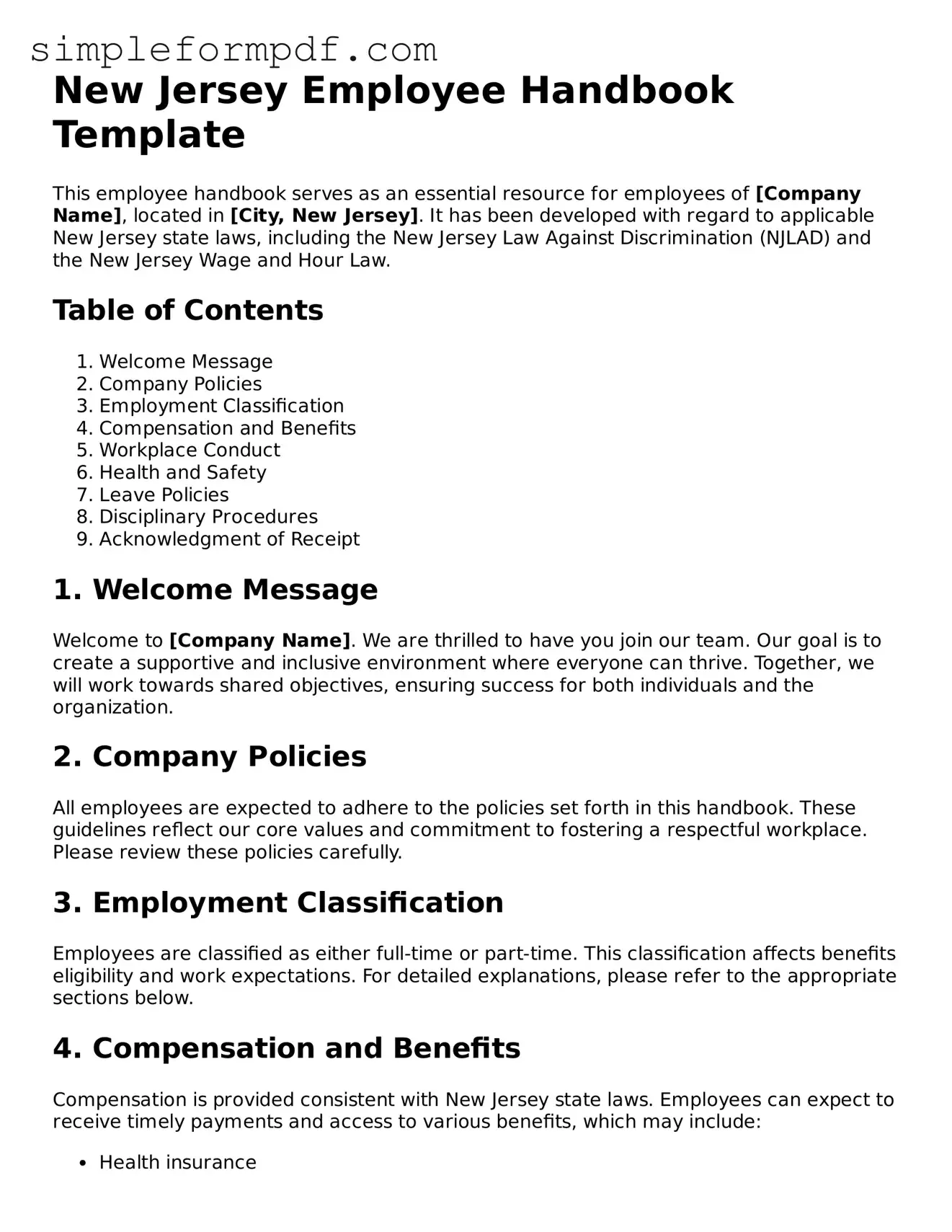New Jersey Employee Handbook Template
This employee handbook serves as an essential resource for employees of [Company Name], located in [City, New Jersey]. It has been developed with regard to applicable New Jersey state laws, including the New Jersey Law Against Discrimination (NJLAD) and the New Jersey Wage and Hour Law.
Table of Contents
- Welcome Message
- Company Policies
- Employment Classification
- Compensation and Benefits
- Workplace Conduct
- Health and Safety
- Leave Policies
- Disciplinary Procedures
- Acknowledgment of Receipt
1. Welcome Message
Welcome to [Company Name]. We are thrilled to have you join our team. Our goal is to create a supportive and inclusive environment where everyone can thrive. Together, we will work towards shared objectives, ensuring success for both individuals and the organization.
2. Company Policies
All employees are expected to adhere to the policies set forth in this handbook. These guidelines reflect our core values and commitment to fostering a respectful workplace. Please review these policies carefully.
3. Employment Classification
Employees are classified as either full-time or part-time. This classification affects benefits eligibility and work expectations. For detailed explanations, please refer to the appropriate sections below.
4. Compensation and Benefits
Compensation is provided consistent with New Jersey state laws. Employees can expect to receive timely payments and access to various benefits, which may include:
- Health insurance
- Retirement plans
- Paid time off
- Employee assistance programs
5. Workplace Conduct
We maintain a standard of conduct that reflects respect for all team members. Unacceptable behaviors, including harassment or discrimination, will not be tolerated. It is essential to foster a safe and productive workplace.
6. Health and Safety
Your safety is a priority. Employees are encouraged to report any unsafe conditions immediately. Safety training will be provided and must be attended by all employees.
7. Leave Policies
Employees are entitled to various types of leave, including sick leave, personal leave, and family leave. Leave policies comply with state and federal laws. It is important to understand the requirements for requesting leave.
8. Disciplinary Procedures
These procedures outline the process for addressing workplace violations. Fairness and transparency will guide disciplinary actions. Employees are encouraged to voice any concerns, ensuring open communication.
9. Acknowledgment of Receipt
All employees are required to sign an acknowledgment form upon receiving this handbook. This ensures that you have read and understood the contents. [Employee Signature] _______________ [Date] _______________
